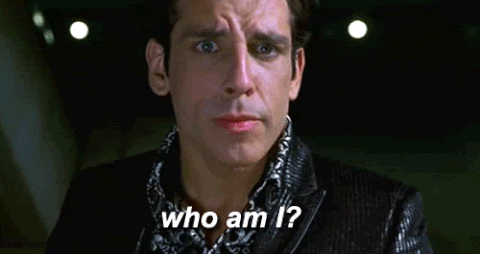The Ultimate Employer Branding Strategy (In 7 Easy Steps)
So you and your team have made the decision to invest in an employer branding campaign. That's great news. But when considering the nitty gritty details of actually implementing a campaign, the task can quickly appear daunting. How do you get started? How do you get all stakeholders on board? Where does content fit into the employer branding strategy? How do you define and measure the candidate and employee experience? What are key elements that affect an employment brand? What is an employer branding campaign even supposed to accomplish? What color is this dress?
Take a deep breath -- we're going to answer all (well, most) of those questions. Here is an easily digestible and easy-to-implement guide to help you develop a powerful employer branding strategy.
Step One: Just Dive In
Sure, you'll eventually need to set goals, establish benchmarks, do surveys and research, and take stock of existing assets. And that’s a sound approach.
But that can also take months, or even years. So, to jump-start your team's employer branding efforts, we advocate immediate action. Yes, develop your strategy carefully. But at the same time, jump right in to one aspect. Maybe it’s starting a blog to get more content in front of prospective candidates. Maybe it’s simply improving the Instagram content that candidates see. Getting to that one thing quickly will make your whole employer brand better and rally key stakeholders to make employer branding a larger priority going forward.
Step Two: Determine Your Point Person
As is the case with any company-wide initiative, identifying a point person to lead an employer branding effort is an essential step towards ensuring a successful campaign. However, who that person is will depend on the size and stage of your company.
If your company is an early stage startup with roughly 10 or fewer employees, congratulations -- you're ahead of the curve and have a golden opportunity to set the tone for strong employer branding practices for years to come. At this stage, your founder(s) will likely need to take charge.
If your startup is beginning to grow into a mid-sized company -- let's say anywhere between 15 and 50 employees -- then you'll want to put together a cross-sectional team of your first people hire and your best marketing employee(s).
Once your company has exceeded 50 employees, your budget and growth demands should justify hiring a dedicated head of employer branding.
Of course, these are simply guideposts and every company's growth priorities will vary. But in any case, it's especially important that leadership views the effort through a marketing lens. For example, since ROI can be difficult to prove in the early stages of an employer branding campaign, a the finance team, or n most cases, the CFO, will likely be more motivated to invest in revenue-producing projects.
Remember: the goal here is sustainable growth, not short term wins. The impact of your employer branding campaign will last for the full life-cycle of your company. But because lack of resources and the risk of using critical bandwidth can discourage talent divisions from adapting and innovating, gathering company-wide support for an employer branding campaign can often be an uphill battle. Therefore, establishing a point person who intimately understands the benefits of employer branding is paramount.
Step Three: Gather Feedback
Remember: even before you hold your first meeting to develop an employer branding strategy, you'll have an employer brand that already exists. It's up to you to educate yourself about that existing employer brand as thoroughly as possible. How do applicants perceive you as an employer? How is your employer brand portrayed in the press? How do your current employees talk about their experience at your company, both internally and externally? (On this front, we advise conducting an anonymous survey to get the most honest, actionable feedback possible.)
Once you're equipped with a 360-degree view of your existing employer brand, you can more easily identify strengths worth emphasizing in outreach and employer branding content, as well as shortcomings that you'll need to address internally.
(Importantly, "addressing shortcomings" doesn't mean lying about those shortcomings in your employer branding content. If you're dishonest about your employer brand, the bill will come due in the shape of low employee retention and an unhappy workforce. We promise.)
Need help building your employer brand strategy? Get in touch with Uncubed Studios today.
Step Four: Identify KPIs and Establish Goals
Especially to those whose purview doesn't include modern hiring challenges, employer branding can be somewhat of an arcane concept. By identifying concrete key performance indicators and sharing those KPIs across your company, you'll put your people team in a better position to elicit support from higher-ups, and most likely, a more robust budget. Furthermore, tracking these KPIs will arm your team with insights that you can be used to more effectively attract top talent.
Now, what do these KPIs typically look like? Of course, organizational goals vary -- for instance, a startup in hyper-growth mode is likely going to identify different KPIs than a monolith looking to maintain business as usual. But generally speaking, you'll want to consider tracking cost-per-hire and time-to-hire, candidate flow and candidate relevance, along with a handful of other metrics. See our full list of top KPIs for employer branding here.
Step Five: Define Your Employee Value Proposition
Once you've taken full stock of your perceived employer brand -- and, you've said it yourself, perception is reality -- you'll be ready to distill that information into an all-encompassing set of core values and benefits that your company offers to employees, ideally communicated in as few words as possible.
This will be your employee value proposition, a key ingredient in your employer branding strategy that'll go a long way in establishing a consistent and clearly communicated employer brand. A clear and accurate EVP will put you in the best position to align your company's leadership and employees, while empowering everyone to serve as employer brand advocates. The process of establishing an EVP should take some time, and should be deeply collaborative. Take a look at our 5-step guide to developing a powerful EVP.
Step Six: Create More Employer Brand Content, Using Partners If Needed
At this point, you've likely already created employer branding content in some form -- perhaps a few social posts or an engineering blog. Armed with clear KPIs and a powerful EVP, your team should now be in the perfect position to produce targeted, impactful employer branding content.
And yet, so many companies still fail to follow through.
Why? There are two major blockers we see: (1) analysis paralysis and (2) and lack of resources.
First, so many companies are overwhelmed by the scale of the project when thinking about managing their employer brand. (As noted above, there’s no substitute for just diving in.)
Secondly, talent teams are still battling resource shortages. Talent teams don’t always have access to content creators, copy writers, and video people. Sometimes they don’t even have access to the company’s main social media channels. So, we advise using partners here – for speed-to-execution, expertise, and even budget efficiency.
The need became so clear that we at Uncubed built an entire studio to help solve for it. Uncubed Studios helps Fortune 100 and growth-stage startups share their story through custom employer branding video, EVP campaigns, experiential content, and more.
Step Seven: Measure, Refine, Repeat
So, you've executed your employer branding campaign strategy. You've established a clear chain of command on employer branding projects, worked collaboratively with your entire team, determined KPIs and your EVP, and created unforgettable employer branding campaign.
So, now what?
Celebrate. Briefly. And then do it all over again.
Take stock of your KPIs. Has your hiring process becoming more efficient? Are you attracting more relevant candidates? Has your company become more diverse and inclusive? Are you retaining your employees for longer periods of time?
You should see some early wins as a result of your efforts (e.g. employees sharing content, an uptick in target candidate profiles applying after watching a video that inspires them, a more robust career page, high-fives, etc.) but some of these KPIs will, of course, take months if not years to provide real insights into your progress -- and that's OK. Employer branding is not a one-off effort. Just as your company evolves, so too will your employer brand. But by implementing a clear employer branding strategy and identifying key point people, the process of employer branding will become more automatic and more natural every day.
After all, everything your company does can affect your employer brand. So why not be intentional about it with a focused employer branding strategy?
ABOUT UNCUBED STUDIOS
Launched in 2016, Uncubed Studios is a full-service creative agency with a client list representing the most influential employers on earth along with the high growth tech companies.
The team that brings the work of Uncubed Studios to life is made up of award-winning experts in cinematography, journalism, production, recruitment, employee engagement, employer branding and more.
Uncubed Studios is part of the Uncubed Group, which also includes Mediabistro, the leading talent & professional community in the media sector, and Finalist, the curated sourcing platform for early professional tech talent.
Interested in speaking with Uncubed Studios for a media opportunity? Contact studios@uncubed.com








